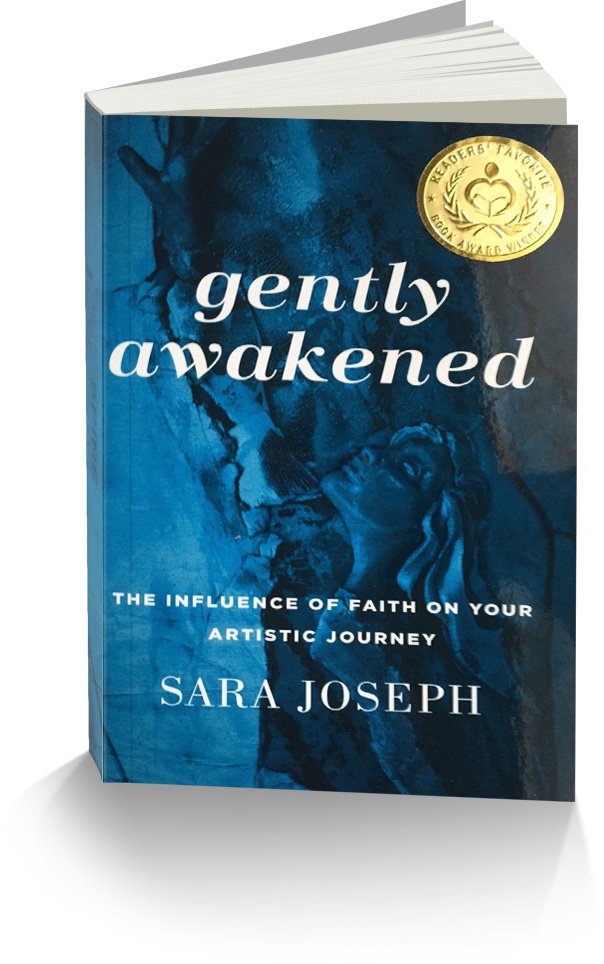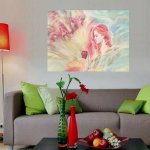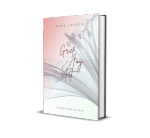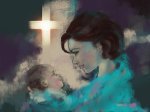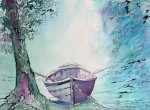The Fabric Art of Kerri Jones
The fabric art of Kerri Jones is unusual because it falls in a category of its own. Her art, appropriately titled RemnantWorks, are neither quilts nor works of embroidery. She calls them Fabric Mosaics.
Fabric Art of Kerri Jones: Lux Mundi is a Latin phrase meaning “Light of the World.”
When she creates her fabric art, she uses small pieces and delicate strips of cotton fabric and applies them to a muslin backing. Fusible material is then applied to the cotton and permanently heat-set to the muslin with an iron.
Kerri Jones has a background in apparel design and constructions, making fabric the natural medium of choice for her fabric art work.
"Visiting the ancient sites in Greece and Turkey were important steps in my evolution as an artist," says Kerri. "Visiting the Church of Holy Wisdom built in the 6th century by the Emperor Justinian was awe-inspiring."
The grandeur of the exquisite mosaics covering the walls and ceiling of the great church introduced her to the profound beauty contained within this ancient art form.
"Gazing up at the mosaics, I realized that with my visual senses, I was reaching through the centuries and connecting with the countless members of the Faithful, who had also rested their eyes upon these beautiful images. I came to understand firsthand the power of Christian artwork as a tool for evangelism in the world."
Historical works of sculpture, paintings, mosaics, iconography, illuminated manuscripts and ancient pottery have been sources of inspiration for her art. Through contemplation of past works, she was moved to create her own vision with a fresh and modern perspective of the timeless virtues, values and ideals they embodied.
Fabric Art of Kerri Jones: St. Catherine
Kerri explains that icons were usually representations of sacred personages of the Bible. St. Catherine was an early Christian martyr. She lived during the time of Christian persecutions in Alexandria, Egypt. After refusing to forsake her Christian beliefs, she was beheaded during the reign of Emperor Maximinus.
Icons were generally produced on a wooden surface following strict rules of color usage and postures and symbolism. Icons were used as objects of veneration and aids to meditation in some Christian traditions.
"My fabric mosaics are intended to be contemporary and "iconic", as opposed to true icons conforming to a prescribed set of rules. They are intended to engage the viewer and assist spiritual contemplation as windows into the transcendent realm.
If, through my work, I can touch hearts and inspire reflection upon the nature of God and his glorious creation, then I will have been true to the mandate in Acts 1:8:
“But ye shall receive power, after that the Holy Ghost is come upon
you: and ye shall be witnesses unto me… and unto the uttermost part of
the earth.”
Thank you, Kerri, for sharing your fabric mosaics.
View the work of other Christian Mixed Media artists

